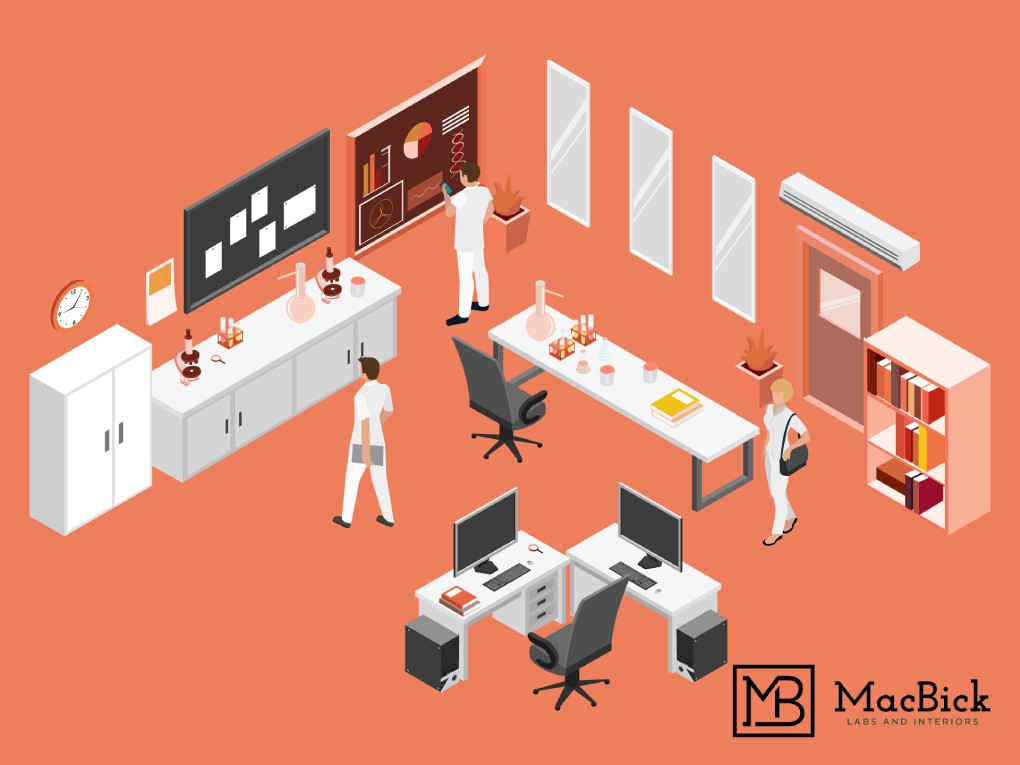The modern office space has undergone massive changes in the last 20 years, from cubicle farms to open floor plans, to game rooms in order to promote wellness, engagement, and productivity. Many of these changes are backed by scientific studies so why is the lab lagging so much in these areas?
The lab environment has gone through a massive transformation in terms of technology, yet the physical space remains the same in most cases. Considering we spend nearly 1/3 of our lives in the workplace and scientists are performing extremely important work, the lab space should echo study results, supporting the wellness and engagement of our own people.
When it comes to creating a healthy lab environment, the first things that come to mind for most people are company-sponsored wellness programs, access to more nutritious snack options, and safety compliance. While these kinds of healthy provisions and considerations for lab employees will no doubt have a positive impact on overall employee experience, they’re only as effective as the infrastructure that supports them.
In order to create a truly healthy lab work environment, it’s critical to prioritize employee experience by focusing on one key area: space allocation and personal space preferences.
Rethinking lab space allocation may seem like a daunting task, but it doesn’t need to be. There are a few simple considerations to take before embarking on a large-scale project.
1. Prioritize Employees Ahead Of Equipment
The right equipment and instrumentation is the cornerstone of any successful cutting-edge lab, and considering the cost of technology, it’s no surprise lab spaces are often designed with machines in mind. While they are absolutely essential, the humans performing the innovative work that machines can’t do should be the focus.
Instead of finding ways to minimize the prominence of machinery in a lab space, assess current tasks being performed by lab staff and separate the repetitive from the innovative. In order to create a more human-centric, healthy work environment for lab employees, consider leveraging technology and automate repetitive tasks that detract from employee creativity and productivity.
Not only will automation free up time and resources, it will also streamline processes to promote overall efficiency. Efficient work environments are healthy ones, and lab employees will have an overall healthier work experience when they can focus on impactful work that leverages their best strengths and interests.
2. Think Beyond Ergonomics
Science has already proven ergonomics are integral to employee wellness, but creating a healthy work environment demands more than just a new seat and desk (though it helps!). When designing a lab space to promote employee wellness, start by asking questions while keeping employee experience in mind.
- Do lab employees have access to plenty of natural light in their work spaces and community areas?
- Is there enough space to foster collaboration?
- Are there areas that are also available for more focused activities, free from distractions?
- Is the noise level too high or dead silent? What is the best noise level for employees’ peak productivity?
How those questions are answered will easily direct lab space redesign. If natural light is lacking, it’s time to consider installing large windows to keep employees comfortable and energized. If there’s no place for employees to comfortably and safely collaborate, consider carving out space free from loud machinery. All of this can be done with the help of an experienced lab space designer, who can also audit the space to make sure no aspects of a healthy work environment are left unconsidered.
3. Consider Scientists’ Preferences
According to the Fellowes Workplace Wellness Trends Report, and overwhelming 87% of workers (not science-specific) want their company to offer healthier workplace options. Sit-stand desks, ergonomic seating, and wellness rooms were among some of the benefits cited in the survey.
Some employers are concerned that this will be a costly investment but it doesn’t have to be if they look at the long-term payoffs. While we don’t have lab-specific data, in the tech industry, 93% of respondents said they’d stay at their company longer if they were offered these types of things. If we can assume that even half of that is true for lab employees, the payoff over time is substantial.
Performing a survey among your group is a great way to gauge whether your employees are interested in making some changes. If you set the right expectations – that you may not be able to implement everything and that it won’t happen overnight, but you’re listening and working towards improvement – that will go a long way.
Healthy Lab Work Environments Are Created Holistically
While any step toward a healthier work environment is a step in the right direction, tackling a healthy work space project requires a holistic approach. When employees feel taken care of and have their needs met, they’re motivated to drive results. And the key to a human-centric environment starts with creating a space designed for humans to do their best work.


